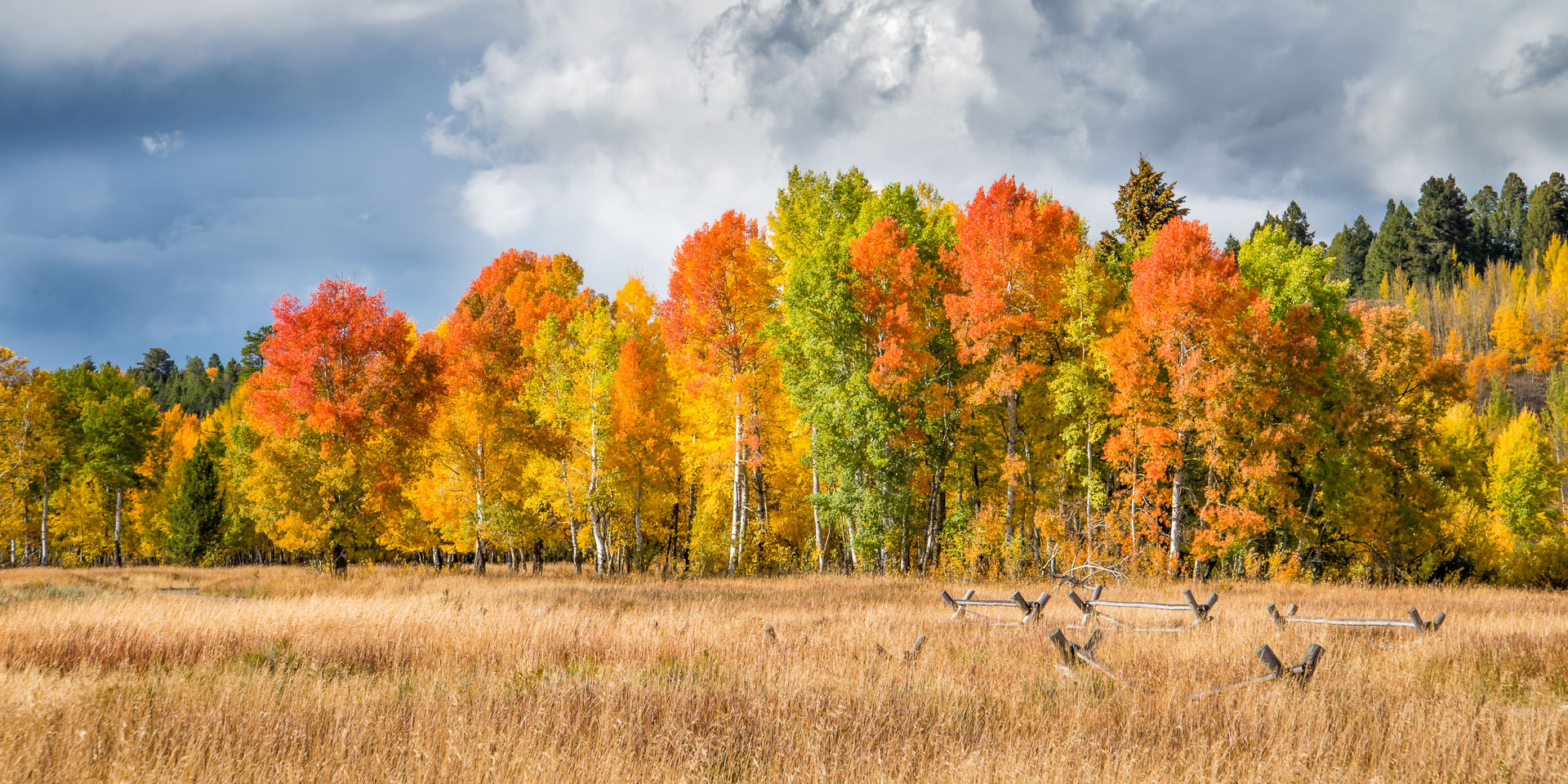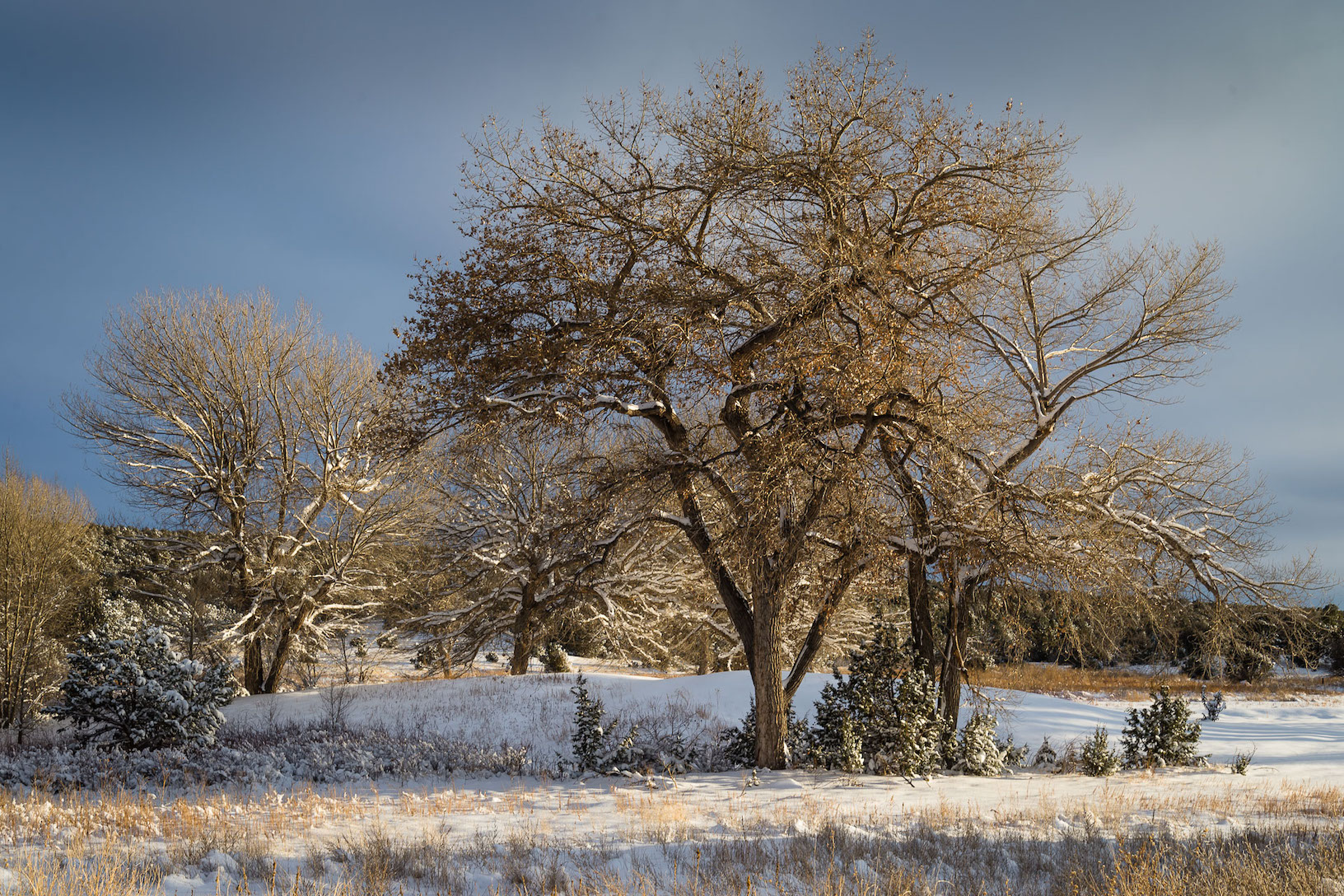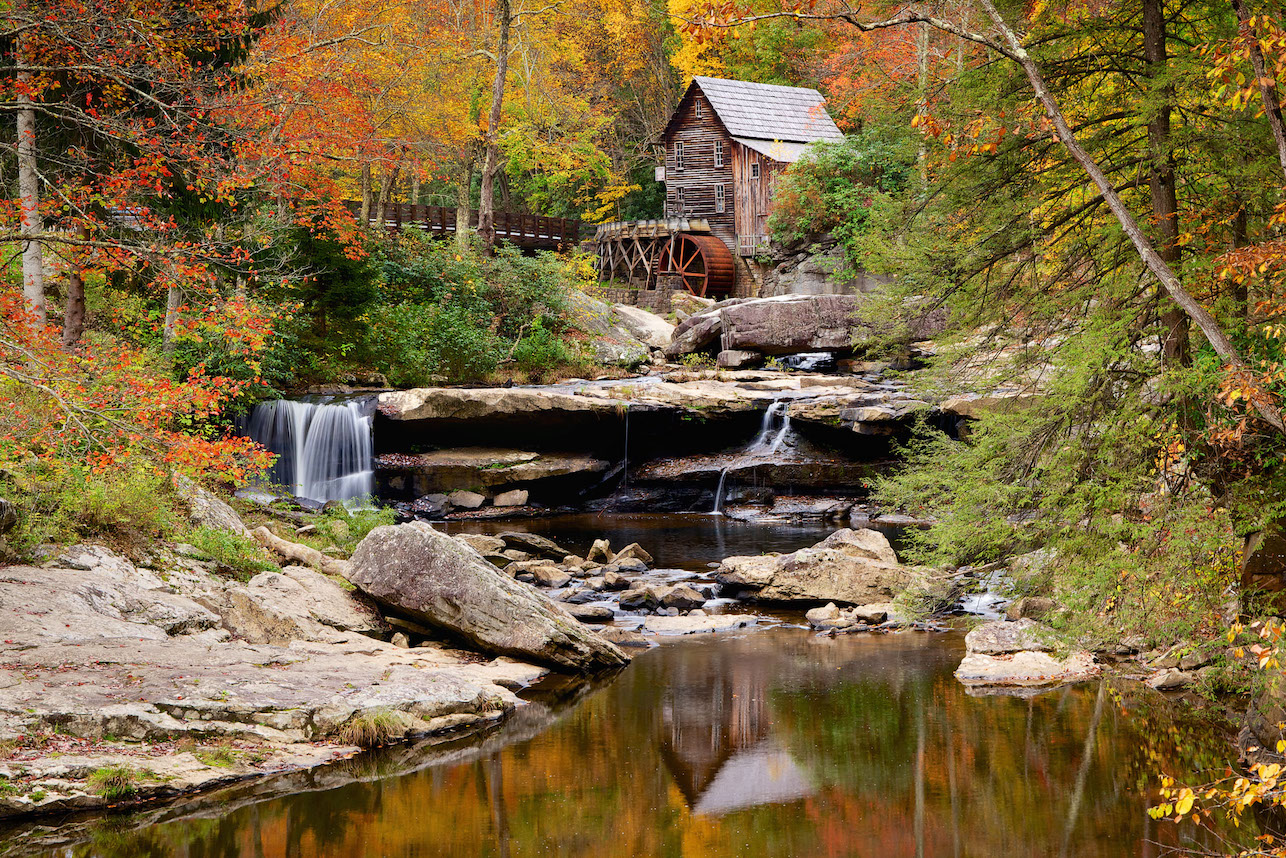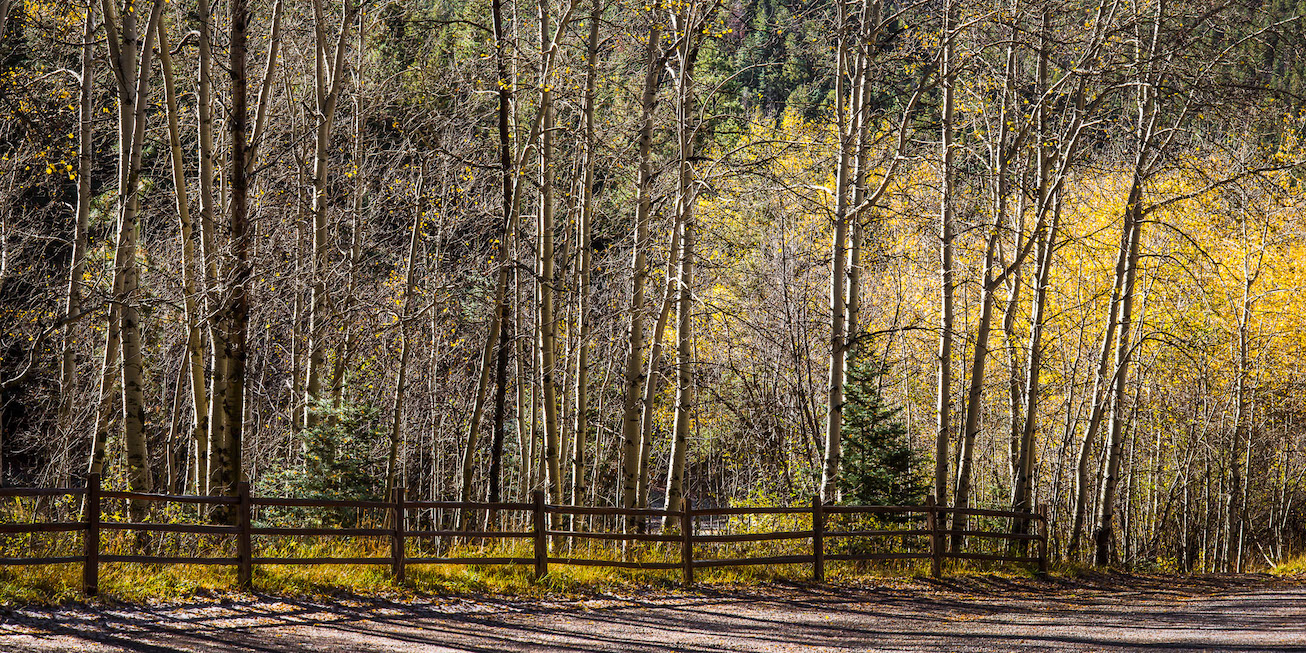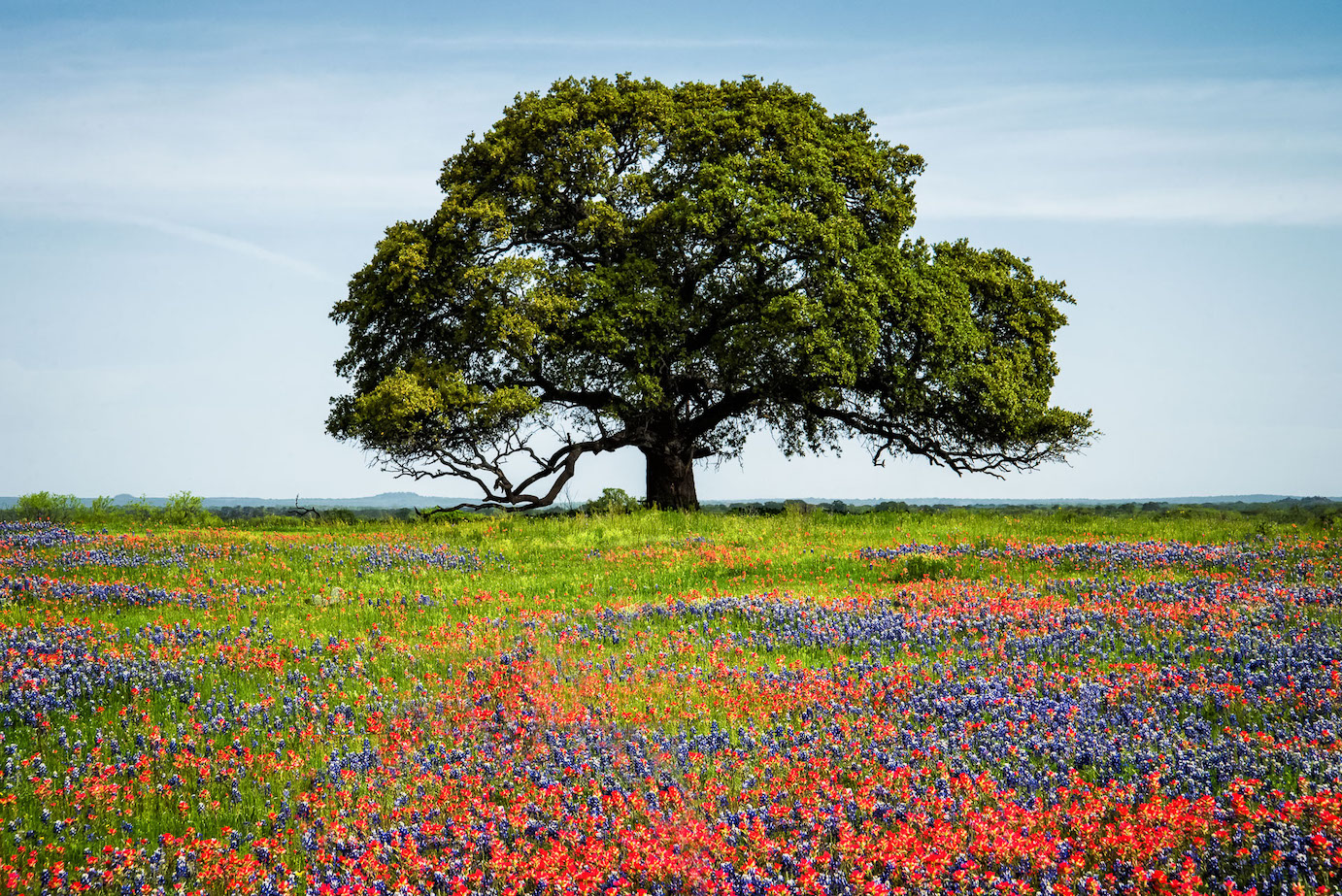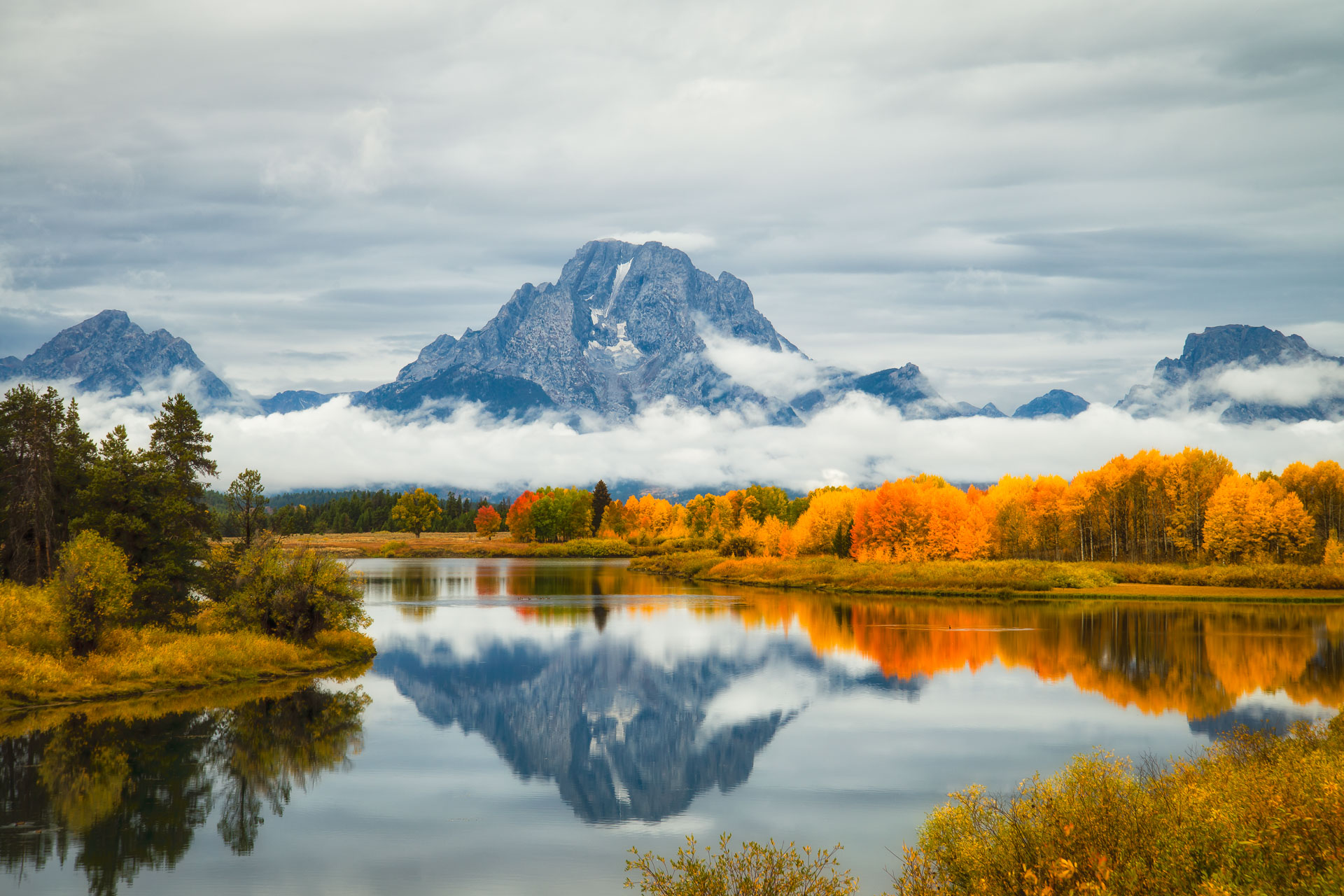Please call gallery director Regina Held to arrange a private gallery tour, make a purchase, or ask any questions.
This is a special page, with a format that Gallery With A Cause has not used until now. Each of the photographic images on this page is accompanied by a personal story written by photographer David Schneider, that adds a great deal of richness. Unlike other pages, you will need to click on each image individually to fully open it in Lightbox, and to reveal additional information. We hope you enjoy this!
The storm would not be deterred any longer. It had been brewing for most of the day, and every so often threatened to sweep through Grand Teton National Park, Wyoming and unleash the promised fury. Each time it readied the assault, the sun would manage, sometimes just barely, to keep it at bay. The long had been long, the sun finally began to set, leaving the storm free to roam the park at will. Just as the sun was about to leave for the day, an aspen grove stepped into the fray. Aspen Stand is the moment the aspens lit up with the golden rays of the late afternoon and held the storm off on their own.
Perhaps, just perhaps, this is not really what happened, but to me, it sure seemed that way. The aspens glowed with a vibrancy that defies the imagination. One moment, they are shaded, and ordinary, if any aspen can ever be called “ordinary,” and the next, they captured the rays of the sun and lit up. The storm halted as if the aspens had something to say about it. Come to think of it, this was exactly the way it happened.
At any rate, I enjoy the interplay of light, trees, and storms in this photograph, and it always reminds me of the power of the aspen tree.
There is something magnificent about a winter storm. First comes the quiet that precedes the storm. The normally busy world slowly, but surely, calms down until nothing is stirring. The quiet is unlike any other quiet, and its peace is calming. Then comes the fury of the storm itself. Perhaps the winds are howling and the snowflakes are horizontal. Perhaps the snow comes straight down, thick flakes blanketing and engulfing the ground. Perhaps it is a more gentle storm, but one that over time delivers a signifiant amount of snow.
Whatever the storm actually delivers the sun will eventually find a way back out, once again lighting up the world around it, and once again bringing the world back to life.
This after-the-storm scene was made near the Quarai Pueblo in the Salinas Pueblo Missions National Monument in central New Mexico. The cottonwood easily rode out the storm, just as it has countless times in its long life. This day, however, the sun bathed the landscape in the warm, rich hues of late afternoon. The still-dark skies behind provided a counterpoint to the light, completing the photograph for me.
Cottonwood Winter might be made on a cold winter’s day, but it sure does warm my heart.
Glade Creek Grist Mill in West Virginia is one of those incredible places that can transport you from the hustle and bustle of the modern day world to a different time entirely. As you stand there, you can feel yourself fall effortlessly back into the late 1800s, and it is quite easy to imagine that era.
The clear, crisp autumn day has been a little bit warmer than the previous ones; a welcome, though brief, respite from the encroachment of winter. The farmer brings his wagon to a halt at the mill; his horses, having hauled a load of fresh grain from field to the mill are more than happy to oblige. The farmer greets the miller, and the old friends catch up on the local news and events, for these trips provide the opportunity for more than just milling. Eventually, they get to the task at hand, the actual milling itself, although while doing that they continue to catch up and talk as old friends do. Despite the hard work, many hands make it easier, and they put their backs into it willingly. The sluice is opened, the water flows over the water wheel, the milling stones grind against each other and grain is slowly turned into the much needed flour. The farmer can already taste tonight’s fresh-backed bread--so can the miller, for his payment is a portion of the flour. The flour is loaded onto the wagon, and once again the horse and farmer start the short journey back to the farm. The forest quickly swallows them up, and the mill’s stands silent until the next load comes its way.
Today, the mill stands there, testimony to a time long past. Yet it provides us a with a bridge to that past, and helps us remember the those times and stories.
The morning was one of those peaceful, tranquil mornings that soothe the soul. The sun was out, bright and sunny, yet at this time of the year it was lower in the sky so it wasn’t overwhelming. The hint of winter was in the air, and it would not be long before the snows came and covered everything in the mountains. That would be tomorrow, however, and this morning stood on its own.
The aspens knew it would be winter soon, too, and they were already deep in the process of changing into their fall colors and then shedding their leaves. They seemed to be in no hurry, though, and in the meantime the aspens showed off during their transition. The fence seemed to keep the aspens at bay, although the aspens respected the fence because they wanted to, and not because they had to.
This beautiful scene was made in the Santa Fe National Forest in New Mexico. True to the promise of winter, the next couple of days saw the snows come in. Next spring the cycle will renew all over again, just as it always has and always will.
In the meantime, the kaleidoscopic aspens look magnificent!
Llano, Texas is a quaint Hill Country, Texas, town. It is small, quiet, beyond friendly, full of history and forgotten treasures, and one of those places you cannot wait to get back to if you are unfortunate enough to have to leave. In the spring, it also has bluebonnets. And importantly, it has Llano’s Tree.
The bluebonnets grow absolutely everywhere, from alongside the road to covering entire fields. Everywhere you look, literally, everywhere you look, you will see bluebonnets, and taken as a whole, the effect is amazing. As you drive down the country roads, you see hill after hill, mile after mile, of colorful roadsides.
Despite this overwhelming scenery, the above vignette struck a deep chord in me. There, alone among the field of flowers, Llano’s Tree stood tall, providing a stellar background to the bluebonnets before it. The low morning sun lit the field up perfectly, and the wisps of clouds broke up the sky. How could I not make a photograph here?
Eventually the flowers will fade away and the farmer will plow the field. In the meantime, though, we have this photograph of the perfect moment in time.
Grand Tetons National Park in Wyoming is known for both its abundant wildlife and stunning views. The Teton Range, which runs the length of the park is, naturally, the highlight. With jagged and ragged peaks jutting to and fro, the mountain forms a stunning backdrop. If that's not enough, the Snake River also runs through the park along the base of the range. These two natural features come together near the northern edge of the park. Mount Moran watches over a gentle meander of the river, forming Oxbow Bend.
Oxbow Bend is, without a doubt, one of the most picturesque scenes anywhere in the country. Because the river widens, the current slows down, which in turn allow the mountains to reflect in the water. If that's not enough, aspens line the shore. In autumn this scene springs to life with unparalleled beauty. I made Oxbow Fall just as a storm was beginning to clear. The sun was playing hide and seek with the clouds, appearing and disappearing at random. When it was out, the aspens took on an unearthly glow and providing an excellent counterpoint to the clouds above.
Oxbow Fall, for me, shows how extraordinary our National Parks can be, and how an incredible scene can become truly outstanding in the correct conditions.

